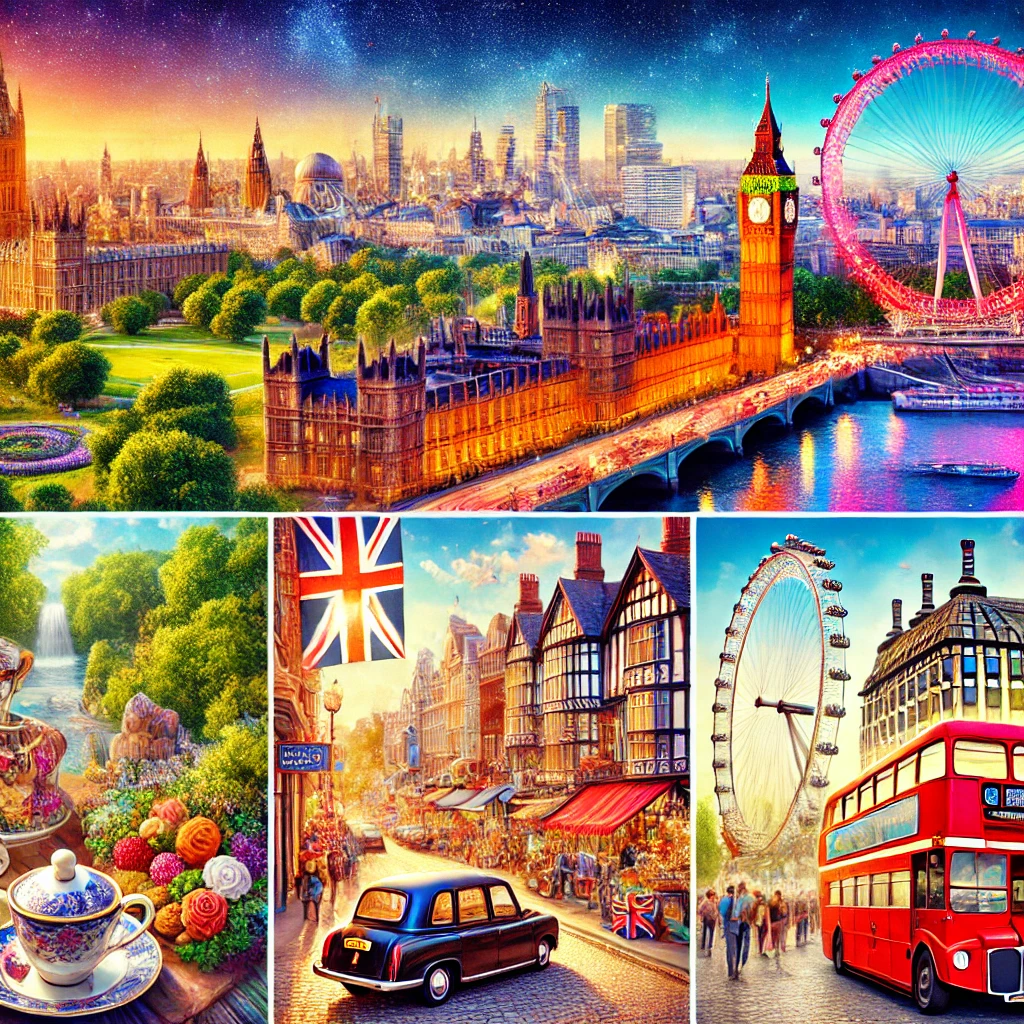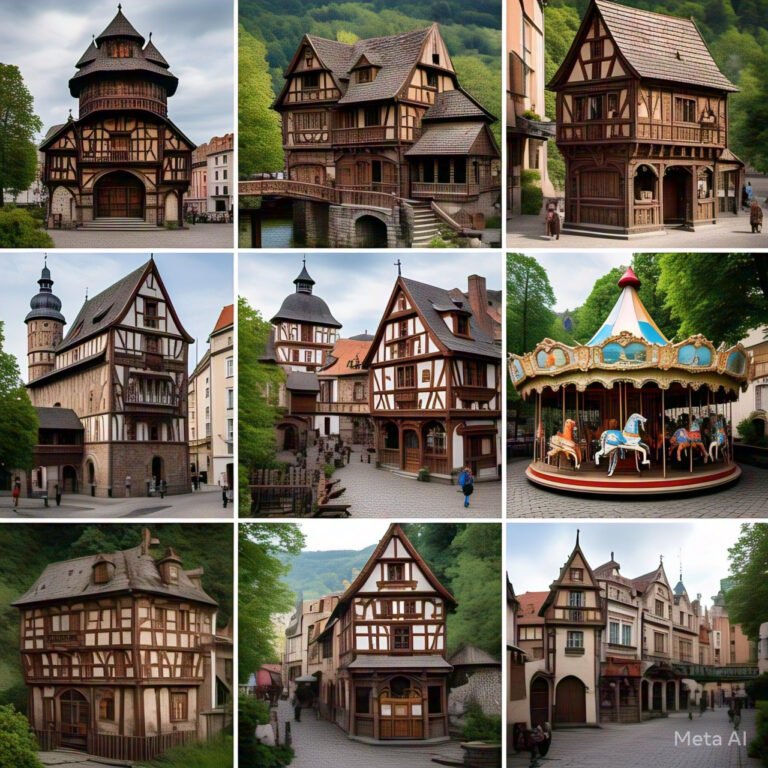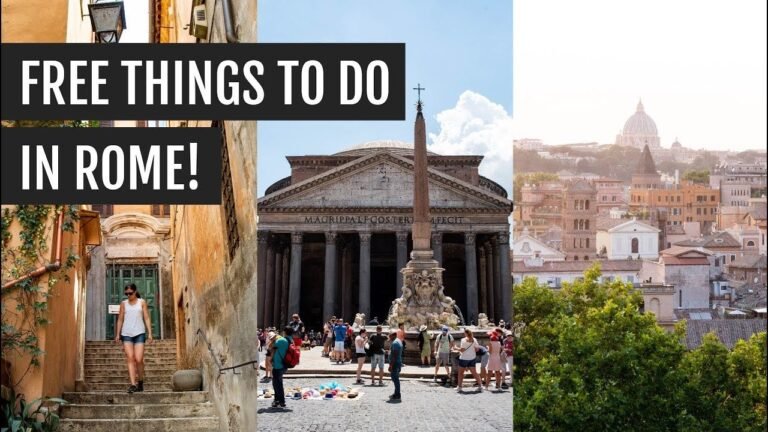London: The Capital of the United Kingdom
London is the capital and biggest city of the United Kingdom. It is one of the most famous cities in the world. The city stands on the River Thames in the south-east of England.
Over the years, London has grown from a small Roman town into a modern global city full of history, culture, and life. It is a place where the old meets the new every day.
1. A Brief History of London
London has a very long and interesting history. It was first built by the Romans around the year AD 43. They called it Londinium and used it as a port for trade.

Main Periods in London’s History
| Time Period | What Happened | Key Events |
|---|---|---|
| Roman Times | London was founded and became a trading port | City walls, early bridges |
| Middle Ages | Markets, churches, and castles were built | Norman Conquest (1066) |
| Tudor & Stuart Times | London grew in trade and power | Great Fire of London (1666) |
| Victorian Era | City expanded and industrialized | Tower Bridge built (1894) |
| 20th Century | Wars and rebuilding | World War II bombings |
| 21st Century | Modern development and technology | 2012 Olympic Games |
London has faced disasters like fires and wars, but it always rebuilt itself. Each time, it came back stronger and more modern.
2. Geography and Layout
London is very large and covers over 1,570 square kilometers. It is made up of:
-
32 boroughs (local areas)
-
The City of London (the small historic and financial area)
Read also: Miiyazuko Bunkrr
Some Important Areas
| Area | What It’s Known For |
|---|---|
| Westminster | Parliament, Big Ben, and Buckingham Palace |
| Camden | Music, markets, and culture |
| Kensington & Chelsea | Museums and luxury homes |
| Southwark | Shakespeare’s Globe and Tate Modern |
| Greenwich | Maritime history and the Prime Meridian |
The River Thames runs through the middle of the city. It gives London its shape and connects many famous sights.
London is also one of the greenest cities in Europe, with many parks such as:
-
Hyde Park
-
Regent’s Park
-
Richmond Park
-
Kew Gardens
3. Government of London
London has two levels of government:
-
National Government
-
Located at the Palace of Westminster (Houses of Parliament)
-
10 Downing Street is the home of the Prime Minister
-
Buckingham Palace is the home of the King
-
-
Local Government
-
The Mayor of London and Greater London Authority (GLA) look after transport, housing, and the environment
-
The City of London Corporation manages the financial district (Square Mile) separately
-
This system helps the city handle both local and national matters smoothly.
4. London’s Economy
London is one of the world’s biggest business and financial centers. People from all over the world come here to work, study, and invest.
Main Industries
-
Banking and finance
-
Technology and startups
-
Film, music, and design
-
Tourism and hospitality
-
Education and research
Key Facts About London’s Economy
| Topic | Details |
|---|---|
| GDP | Over £550 billion (approx.) |
| Stock Exchange | London Stock Exchange |
| Business Areas | City of London, Canary Wharf |
| Visitors per Year | About 30 million international tourists |
London’s economy keeps growing because of its mix of traditional business and modern technology.
5. People and Communities
London is home to about 9 million people. It is one of the most multicultural cities in the world.
Community Facts
-
People from more than 180 countries live in London
-
Over 300 languages are spoken
-
Major religions include Christianity, Islam, Hinduism, Sikhism, and Judaism
Local Highlights
| Topic | Details |
|---|---|
| Diversity | Very high – many different cultures |
| Neighborhoods | Chinatown, Little India (Southall), Brick Lane |
| Main Challenge | Expensive housing and living costs |
| City Values | Equality, creativity, and respect for all |
London’s diversity gives it energy and color. Every area has its own food, music, and festivals.
6. Culture and Lifestyle
London is full of art, music, theatre, and food. It is a city that never sleeps.
Top Cultural Spots
| Type | Examples |
|---|---|
| Museums | British Museum, V&A, Science Museum |
| Art Galleries | Tate Modern, National Gallery |
| Theatres | West End, Globe Theatre |
| Music Venues | O2 Arena, Royal Albert Hall |
Big Events Every Year
-
Notting Hill Carnival – a lively street festival
-
London Marathon – world-famous running event
-
New Year’s Fireworks – by the River Thames
-
London Fashion Week – international style event
-
Film Festival – celebrates cinema from around the world
Food and Markets
London has food from everywhere:
-
Street food in Camden and Borough Market
-
Indian, Chinese, Italian, Turkish, and Caribbean dishes
-
Traditional British pubs and tea rooms
Culture in London means creativity, variety, and fun for everyone.
7. Education and Learning
London is a top city for learning and research. Many world-famous universities are located here.
Major Universities
| University | What It’s Known For |
|---|---|
| University College London (UCL) | Science and engineering |
| Imperial College London | Technology and medicine |
| King’s College London | Law and health |
| London School of Economics (LSE) | Economics and politics |
It is also home to the British Library and many research centers. Students from all over the world come to study in London.
8. Transport System
London has one of the most complete transport systems in the world.
Main Ways to Travel
-
The Underground (Tube) – oldest metro system in the world
-
Buses – famous red double-deckers
-
Trains – connect London to other UK cities
-
River boats – travel along the Thames
-
Airports – Heathrow, Gatwick, Stansted, Luton, and London City
Transport Quick Facts
| Type | Description |
|---|---|
| Tube | 11 lines and over 270 stations |
| Payment | Contactless and Oyster card |
| Bikes | Many cycle routes and rentals |
| Eco Programs | Electric buses and low-emission zones |
London is easy to travel around and continues to improve its transport to be cleaner and faster.
9. Tourism and Attractions
London is one of the most visited cities in the world. People come for its mix of history, shopping, and entertainment.
Most Famous Attractions
-
Big Ben and Houses of Parliament
-
Buckingham Palace
-
Tower of London
-
Tower Bridge
-
London Eye
-
St. Paul’s Cathedral
-
British Museum
-
Trafalgar Square
Best Areas to Visit
| Place | Why People Go |
|---|---|
| Covent Garden | Street shows and shopping |
| Soho | Nightlife and restaurants |
| Shoreditch | Art and creative culture |
| Camden | Music and markets |
| Greenwich | Museums and river views |
Visitors can shop on Oxford Street, enjoy food from around the world, and explore both historic and modern sights.
10. Challenges and Future Goals
London is a successful city, but it also faces problems that leaders are trying to solve.
Major Challenges
-
High cost of housing
-
Air pollution and heavy traffic
-
Social inequality in some areas
-
Pressure on public transport
Environmental Plans
| Project | Goal |
|---|---|
| Ultra Low Emission Zone (ULEZ) | Cleaner air |
| Congestion Charge | Reduce car use |
| Green Parks Project | Plant more trees |
| Smart City Plan | Save energy and improve recycling |
London’s goal is to become carbon-neutral by 2030, focusing on clean energy and greener travel.
11. Conclusion
London is not just a city—it is a world in one place. It mixes old traditions with new ideas, royal palaces with modern skyscrapers, and quiet parks with busy markets.
People from every country have made London their home, giving it endless variety and life. Whether you visit for history, study, work, or adventure, London always offers something special.



